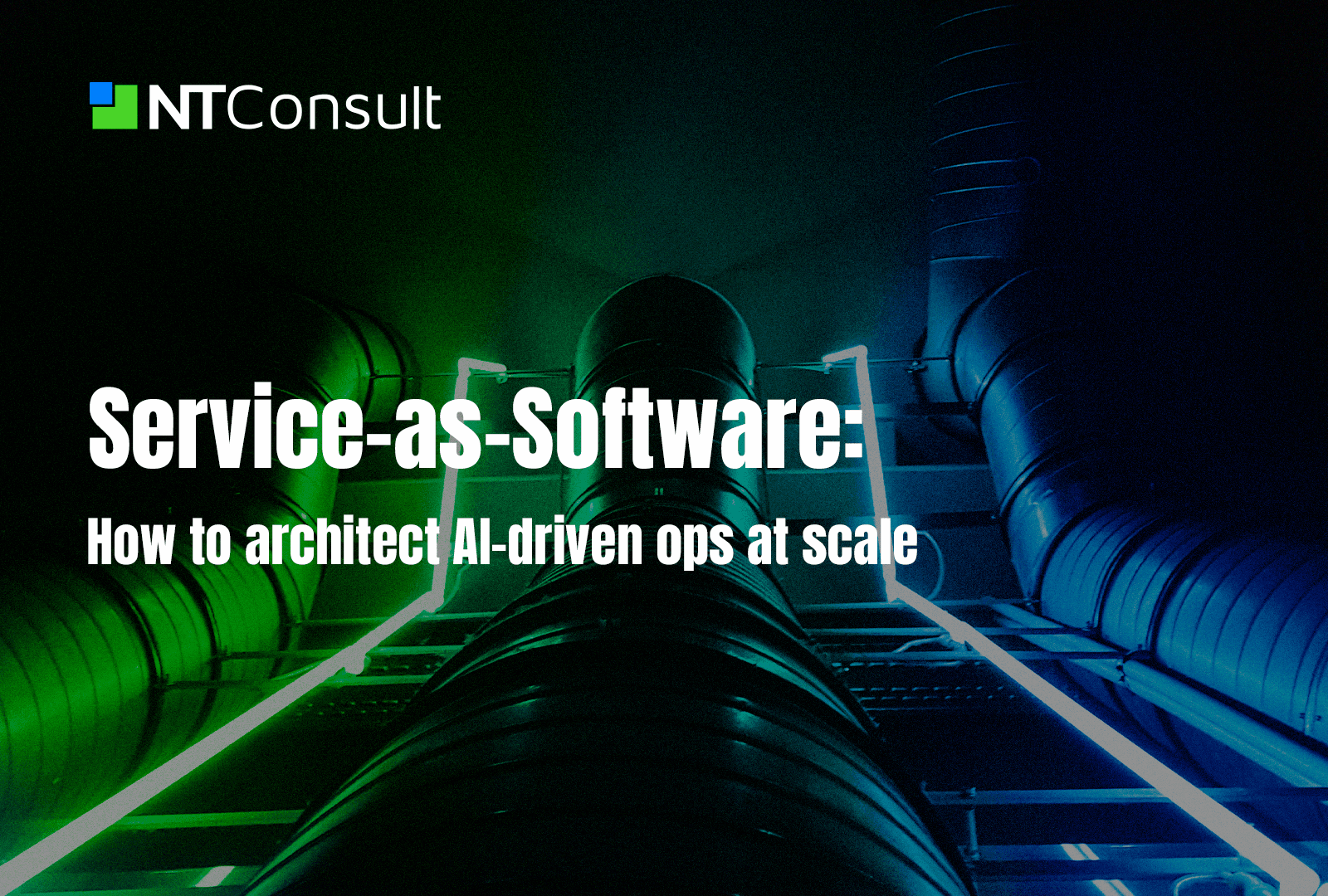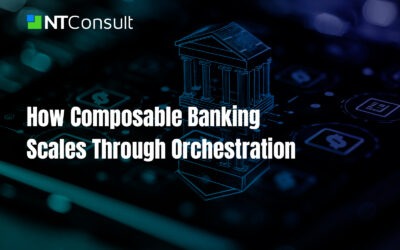A structural shift is underway in enterprise operations. Traditional SaaS platforms were built for humans to operate tools and for knowledge workers to execute tasks. But the landscape is changing.
Enter service-as-software: a model where AI agents no longer assist the workforce but replace repetitive knowledge work. From email handling to customer service workflows, intelligent agents now perform execution tasks once managed by degree-holding professionals.
This goes beyond cost reduction. It redefines service delivery by removing the need for human action in many digital processes. For enterprise leaders, it’s a timely opportunity to re-architect service layers with AI labor.
This article breaks down how this model works in practice and how NTConsult enables organizations to implement secure, scalable ecosystems of AI agents aligned with tangible business goals.
What is service-as-software and why it’s gaining momentum
Service-as-software is a whole new framework of managing through AI agents. Instead of software supporting humans, like in SaaS, AI agents now perform tasks directly and autonomously.
This shift is accelerating due to:
- Generative AI maturity;
- Cloud-native, event-driven infrastructure;
- Pressure to reduce costs and improve operational resilience.
Traditional systems rely on user input. Service-as-software automates the function itself triggering, executing, and resolving tasks without human involvement. Enterprises that adopt this model gain speed, consistency, and scale.
Key characteristics: how service-as-software differs from SaaS and automation
Legacy SaaS and Robotic Process Automation (RPA) tools were created to assist users. Service-as-software shifts the paradigm:
- Autonomy: agents run processes without human intervention.
- Decision-making: agents act based on real-time data and conditions.
- Learning: continuous improvement based on outcomes.
- Integration: seamless operation across platforms via APIs and event streams.
Instead of automating, companies are delivering through AI.
The new challenge is to ensure these agents integrate securely and predictably into both legacy and modern architectures.
Real-world enterprise use cases: where service-as-software works
Service-as-software is already reshaping service operations across industries:
Telecom:
- AI agents handle ticket routing and triage based on SLA risk and business context;
- Automated workflows for customer provisioning and onboarding;
- Real-time alerts on service interruptions and compliance thresholds.
Finance & Insurance:
- AI-powered ingestion and extraction of data from policy documents and forms;
- Risk scoring and pre-decisioning on claims and credit requests;
- Triggered alerts for fraud signals and transaction anomalies.
These deployments work because the tasks are structured, high-volume, and benefit from low-latency decisions ideal conditions for service-as-software. NTConsult guides enterprises in identifying such candidates and deploying at scale, with trustful agentic models
Want to learn how to improve your operational service workflows?
Download our guide on ServiceNow Implementation
Architecture considerations: how to build for agentic services
Implementing service-as-software means rethinking your service stack around AI execution, not human workflows.
This includes:
- Task orchestration: use platforms like Camunda 8 to coordinate multi-step workflows.
- Agent frameworks: combine LLM agents with deterministic rules engines for balance.
- Event-driven backbone: leverage Kafka, webhooks, and APIs for seamless data flow.
- Governance: implement auditability, fallback strategies, and human-in-the-loop checkpoints.
You must count with a partner able to translate this architecture into delivery, going beyond experimentation designing for security, scale, and real-world resilience.
Risks and governance: what enterprises must plan for
Deploying AI agents at scale requires discipline. With autonomous execution comes operational responsibility.
Enterprises must account for:
- Agent stability and task conflict resolution;
- Model drift and hallucination prevention;
- Traceability and explainability in decision chains;
- Compliance alignment in regulated environments.
One common practice is to include safeguards at every layer, enabling AI agents to operate confidently and compliantly without exposing the business to unmanaged risk.
Why implementation strategy defines success in service-as-software
Technology alone doesn’t deliver outcomes.
What separates success from failure in service-as-software is strategy:
- Selecting the right processes for agentic execution
- Designing hybrid models where AI collaborates with orchestration platforms
- Testing incrementally via agile sprints with tight business-IT feedback loops
- Aligning metrics: SLAs, latency, auditability, and business KPIs
Count with service providers specialized in turning complex service environments into reliable, AI-augmented systems supported by a certified team, proven playbooks, and scalable architecture.
Conclusion
Service-as-software is here. It’s already disrupting traditional service roles and rewriting the rules of digital operations. By shifting execution to AI agents, organizations reduce manual load, improve consistency, and scale faster.
NTConsult delivers the strategy, architecture, and support needed to implement this shift securely and effectively.
Ready to explore how service-as-software can reduce friction and scale performance? Talk to our AI integration specialists and get a clear roadmap for building intelligent, reliable service systems.
Start your journey with NTConsult


 Portuguese
Portuguese Spanish
Spanish


